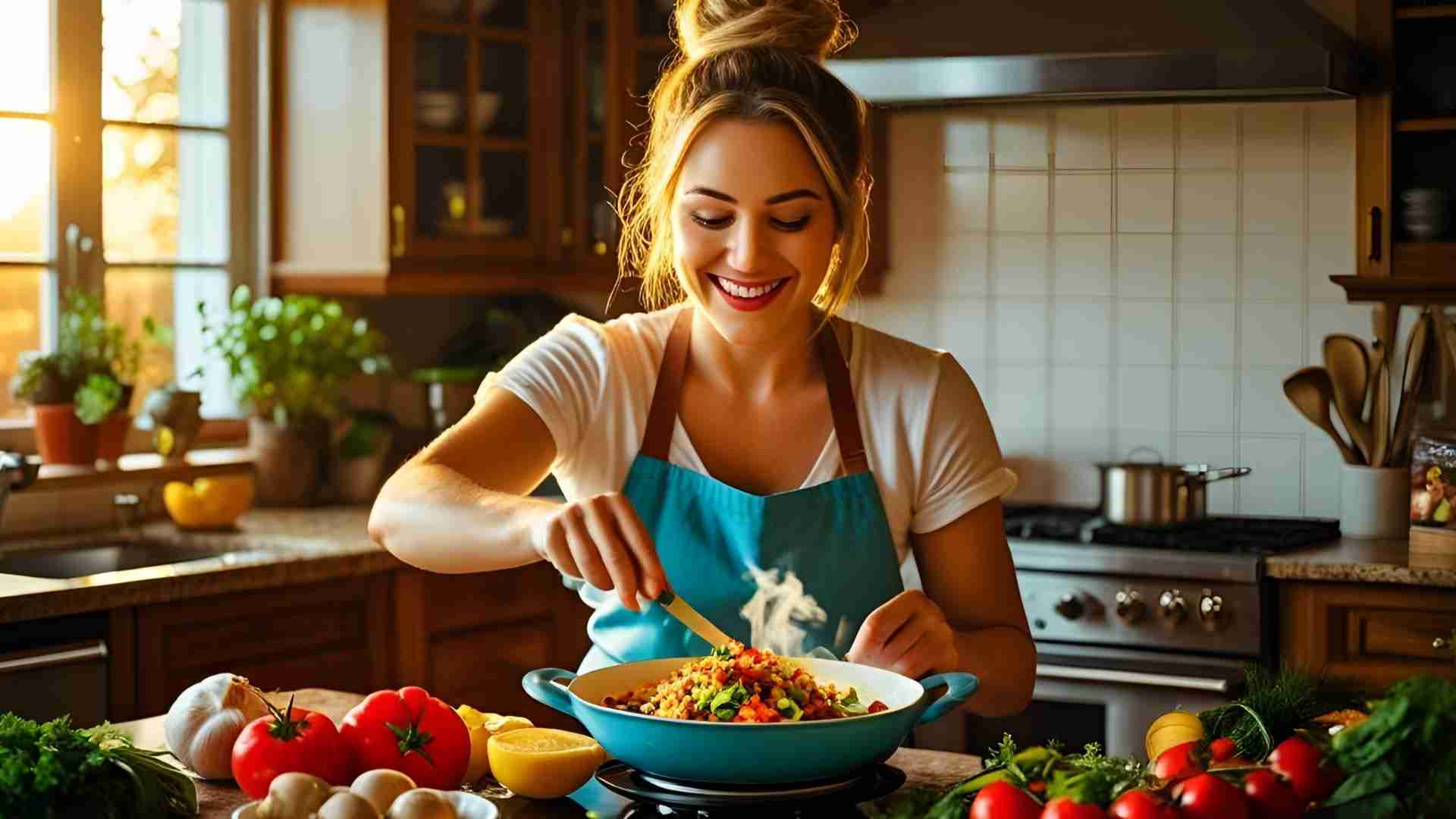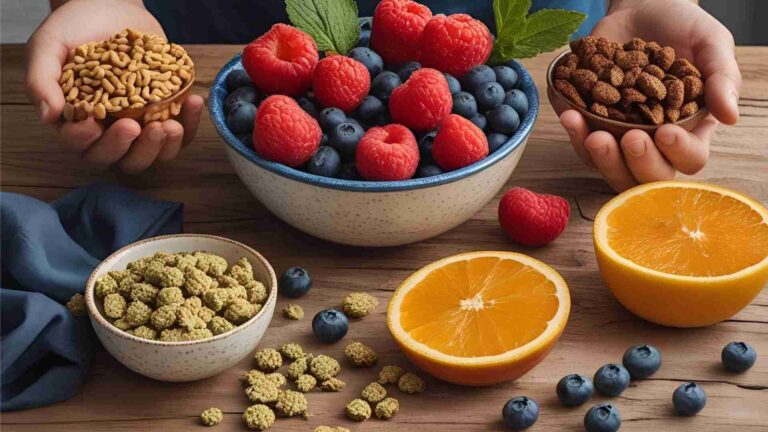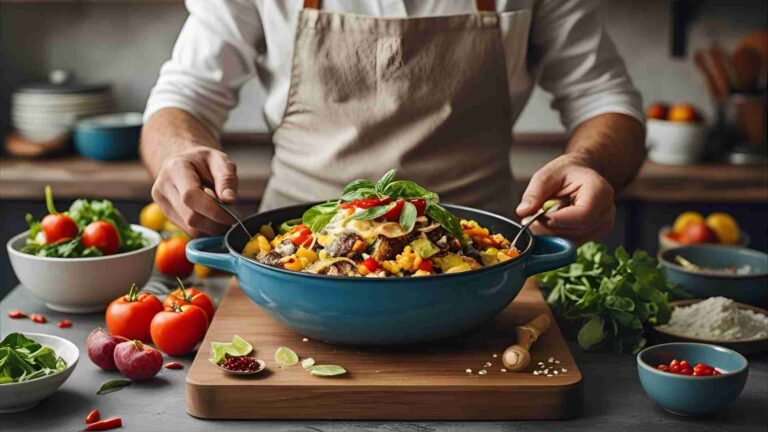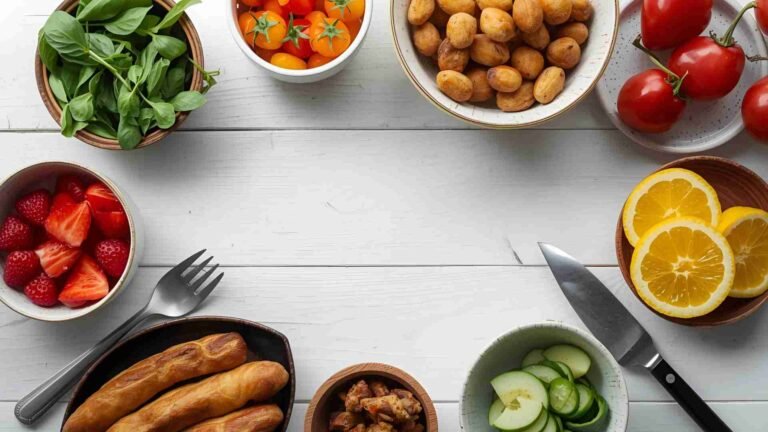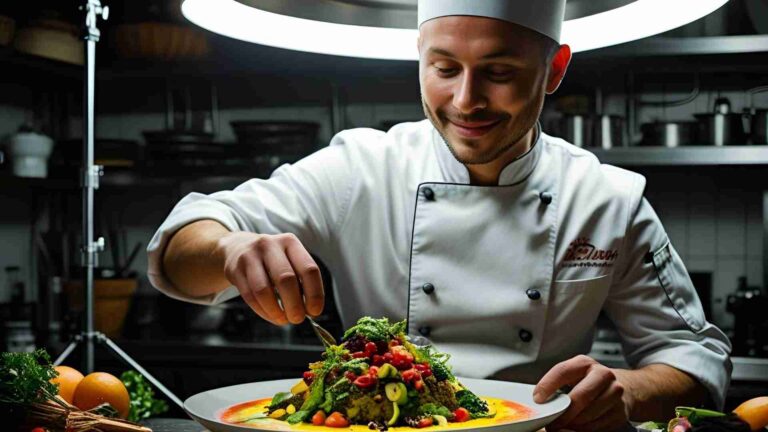Top 10 Strategies for a Successful Food Vlog
Discover the top 10 strategies for a successful food vlog, from high-quality content to branding and SEO, to grow your audience and monetize your passion.
Food vlogging has become a vibrant platform for sharing culinary creativity, connecting with audiences, and building a sustainable career. With millions of food enthusiasts turning to platforms like YouTube, Instagram, and TikTok for recipes, restaurant reviews, and cooking inspiration, the opportunity to carve out a niche in this space is immense. However, standing out in a crowded digital landscape requires strategic planning, high-quality content, and a strong brand identity. This comprehensive guide outlines the top 10 strategies to create a successful food vlog, offering actionable insights to help you captivate your audience, grow your following, and monetize your passion.
1. Prioritize High-Quality Content
Content is the backbone of any successful food vlog. To capture and retain viewers, your videos must be engaging, visually appealing, and informative. Here’s how to elevate your content:
Create Unique Recipes
Develop signature recipes or add a personal twist to classic dishes. Whether it’s a family recipe passed down through generations or a creative fusion of cuisines, your unique angle will differentiate you from competitors. For example, focus on niche areas like vegan comfort food or budget-friendly gourmet meals to attract a dedicated audience.
Invest in Visual Quality
High-quality visuals are non-negotiable in food vlogging. Appetizing food shots rely on good lighting, sharp imagery, and thoughtful composition. Start with a smartphone if your budget is limited—modern devices like the iPhone 14 or Samsung Galaxy S23 offer excellent camera quality. For advanced vloggers, consider a mirrorless camera like the Sony ZV-E10 ($699) or Canon EOS M50 Mark II ($599). Enhance smartphone footage with clip-on lenses, such as Moment lenses ($120-$150), for professional-grade effects like macro or wide-angle shots.
Ensure Clear Instructions
Your audience relies on you for guidance, so provide clear, concise recipe instructions. Break down complex techniques into simple steps, include tips for substitutions, and highlight common mistakes to avoid. For example, explain how to properly knead dough or temper chocolate to make your content accessible to beginners.
Tell a Compelling Story
Storytelling creates an emotional connection with viewers. Share the inspiration behind your recipes, such as a childhood memory or a cultural tradition. For instance, a vlog about homemade pasta could include a brief anecdote about learning the recipe from an Italian grandmother, making the content relatable and memorable.
Diversify Content Types
Keep your audience engaged by mixing up your content. Alternate between cooking tutorials, restaurant reviews, taste tests, cooking challenges, or live Q&A sessions. For example, a “$10 meal challenge” or a “street food tour” can add variety and appeal to different viewer interests.
Maintain a Content Calendar
Consistency is key to building a loyal audience. Plan your videos in advance using a content calendar to ensure regular uploads. Tools like Trello or Notion can help you organize ideas and track posting schedules. Aim for at least one video per week to maintain momentum without compromising quality.
2. Choose the Right Equipment
The right gear can elevate your vlog’s production quality, making it more appealing to viewers. Focus on three critical categories: cameras, microphones, and lighting.
Cameras
For beginners, a smartphone with a high-resolution camera (e.g., Google Pixel 8, $699) is sufficient. If upgrading, consider a DSLR or mirrorless camera for better control over depth of field and low-light performance. Popular options include:
| Camera Model | Price | Key Features |
|---|---|---|
| Sony ZV-E10 | $699 | 4K video, compact, vlogging-optimized |
| Canon EOS M50 Mark II | $599 | 24.1MP, autofocus, flip-out screen |
| iPhone 14 Pro | $999 | 48MP camera, cinematic mode |
For smartphones, accessories like the Joby GorillaPod tripod ($49.99) or clip-on lenses can enhance versatility.
Microphones
Audio quality is critical—viewers tolerate average visuals but not poor sound. Invest in a clip-on lavalier microphone like the Rode SmartLav+ ($79) for clear voice recording or a shotgun microphone like the Rode VideoMicro ($59) for directional audio capture. These are ideal for food vlogs, as they focus on your voice while minimizing background noise.
Lighting
Lighting transforms food visuals from dull to drool-worthy. Natural lighting is cost-effective and authentic, especially when filming near a window during golden hour. For consistent results, invest in artificial lighting:
| Lighting Equipment | Price | Key Features |
|---|---|---|
| Neewer LED Panel | $99 | Adjustable brightness, portable |
| Godox SL-60W Softbox | $139 | Diffused light, professional-grade |
Combine natural and artificial lighting for flexibility. For example, use a softbox for controlled indoor shoots and natural light for vibrant outdoor scenes.
Chart: Equipment Workflow
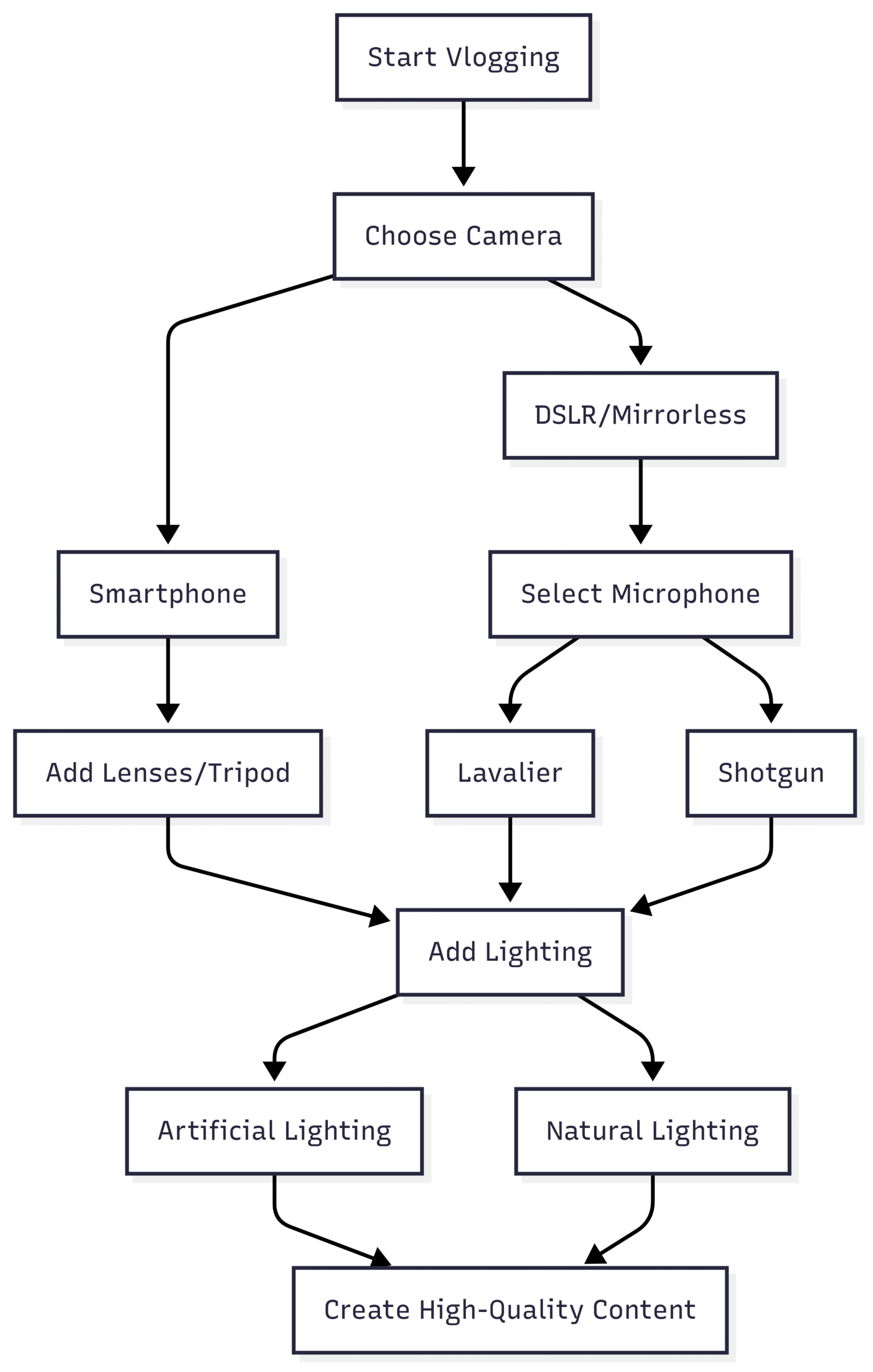
3. Master Camera Angles and Stability
Effective camera angles showcase your food and preparation process dynamically. Two angles dominate food vlogging:
- Bird’s-Eye View: Ideal for displaying ingredient layouts and preparation techniques. Use a tripod or overhead rig to capture the full workspace.
- Straight-On Shot: Highlights the dish’s textures and colors, perfect for close-ups of plating or sizzling pans.
Use a sturdy tripod like the Manfrotto Compact Action ($79.99) to ensure shake-free footage. For dynamic vlogs, record with two cameras simultaneously to capture both angles without re-filming. Ensure consistent color grading in post-production using software like Adobe Premiere Pro or DaVinci Resolve to maintain visual coherence.
Pro Tip: Use clean, uncluttered backgrounds like wooden tables for rustic dishes or marble countertops for elegant desserts to keep the focus on the food.
4. Build a Distinct Brand Identity
A strong brand identity sets you apart in a saturated market. Follow these steps to create a recognizable brand:
Define Your Niche
Specialize in a specific cuisine (e.g., Korean, vegan, or fusion) or style (e.g., budget cooking, molecular gastronomy). For example, My Korean Kitchen focuses on authentic Korean recipes, attracting a dedicated audience of Korean food enthusiasts.
Establish Visual Consistency
Create a cohesive look with a consistent logo, color palette, and font style across your videos, blog, and social media. Tools like Canva (free or $119/year for Pro) can help design professional branding assets.
Be Authentic
Let your personality shine through. Share your passion for food and personal stories to build trust. For instance, discussing your cultural heritage or cooking inspirations fosters a deeper connection with viewers.
Communicate Your Brand
Use storytelling to convey your brand’s mission. Post consistently across platforms, and engage with your audience through comments and social media interactions. A blog, like My Korean Kitchen’s, can serve as a central hub for detailed content, complementing your videos.
5. Engage Your Audience
Building a loyal audience requires active engagement and community-building:
- Respond to Comments: Reply to viewer questions and feedback to foster a sense of community. For example, if a viewer asks for a gluten-free version of your recipe, provide a quick tip or promise a future video.
- Solicit Feedback: Ask viewers for recipe suggestions or content ideas to make them feel involved.
- Run Contests: Host giveaways, like a branded apron or cookbook, to boost engagement. Ensure clear rules and promote via social media.
- Collaborate: Partner with other food vloggers or influencers for cross-promotion. For example, collaborate on a “recipe swap” video with a creator in a complementary niche.
6. Optimize for SEO and Promotion
Search engine optimization (SEO) and strategic promotion are critical for discoverability:
Keyword Research
Use tools like Google Keyword Planner or TubeBuddy to identify high-traffic keywords (e.g., “easy vegan recipes” or “quick dinner ideas”). Incorporate these into video titles, descriptions, and tags. For example, a title like “5-Minute Vegan Stir-Fry Recipe” is more searchable than “Stir-Fry Tutorial.”
Social Media Marketing
Share short, engaging clips on Instagram Reels, TikTok, or X to drive traffic to your main videos. Post behind-the-scenes content or quick tips to maintain audience interest.
Email Marketing
Build an email list using platforms like Mailchimp (free for up to 500 subscribers) to share updates and new content. Offer a free recipe eBook as an incentive for sign-ups.
Platform Optimization
Tailor content to each platform’s requirements. For YouTube, create 10-15 minute videos with detailed tutorials. For TikTok, focus on 15-60 second clips showcasing quick recipes or trends.
7. Monetize Your Vlog
Turn your passion into profit with these monetization strategies:
| Monetization Method | Description | Potential Earnings |
|---|---|---|
| Affiliate Marketing | Earn commissions via links to products | 5-20% per sale |
| Display Advertising | Ads on YouTube or blog (e.g., Google AdSense) | $0.50-$5 per 1,000 views |
| Sponsored Content | Partner with brands for sponsored posts | $500-$5,000 per post |
| Recipe Development | Create recipes for brands or publications | $100-$1,000 per recipe |
| Merchandise | Sell branded aprons, cookbooks, etc. | Varies |
- Affiliate Marketing: Join programs like Amazon Associates to earn commissions on kitchen tools or ingredients.
- Sponsored Content: Pitch to brands whose products align with your niche, such as cookware or spice companies.
- Merchandise: Use platforms like Teespring to sell branded merchandise, such as recipe books or aprons.
8. Plan Your Shoots Meticulously
A well-planned shoot ensures professional, engaging content. Follow these steps:
- Create a Shot List: Outline key shots, such as ingredient prep, cooking process, and final plating. Include specific angles and transitions.
- Plan the Thumbnail: Design a vibrant, clickable thumbnail featuring the finished dish. Tools like Canva can help create eye-catching designs.
- Prepare Equipment and Props: Gather cameras, tripods, lights, and themed props (e.g., rustic cutting boards for savory dishes).
- Focus on Food Styling: Study food styling techniques from culinary magazines or stylists. Create a mood board for inspiration to ensure visually appealing presentations.
9. Stay on Top of Trends
Following food trends keeps your content relevant. Monitor viral trends like Dalgona coffee or cloud bread, and adapt them to your style. For example, create a vegan version of a trending dish to appeal to your niche. Follow influencers like Divas Can Cook on YouTube or Instagram for inspiration, but avoid copying—add your unique spin.
10. Complement Your Vlog with a Blog
A blog enhances your reach and SEO. Use a platform like WordPress with plugins like WP Recipe Maker ($49/year) to create interactive recipe cards with structured metadata for better search visibility. Benefits include:
- Detailed Content: Blogs allow for in-depth recipes, tips, and stories that complement your videos.
- SEO Boost: Keyword-rich blog posts improve search rankings, driving traffic to your vlog.
- Monetization: Add affiliate links or ads to generate additional revenue.
Example: WP Recipe Maker Features
| Feature | Benefit |
|---|---|
| Interactive Recipe Cards | Easy-to-follow recipes for viewers |
| SEO Metadata | Improves search engine visibility |
| Video Integration | Embeds vlogs into blog posts |
| Affiliate Links | Monetizes equipment/ingredient recommendations |
Chart: Content Creation Workflow
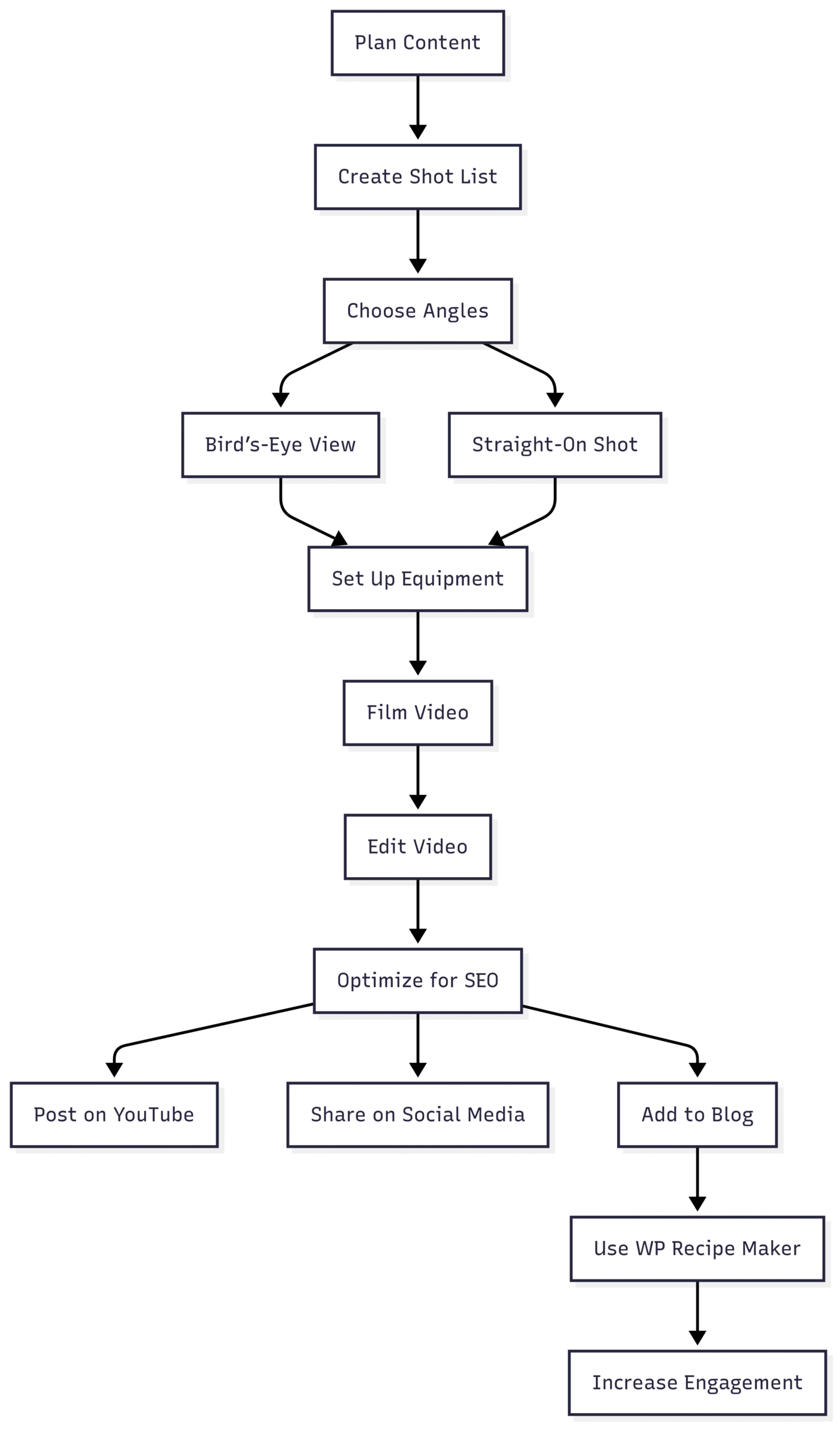
Next Steps to Launch Your Food Vlog
Starting a food vlog requires dedication, creativity, and strategic planning. Here’s how to begin:
- Brainstorm Your Brand: Define your niche, USP, and target audience. Create a logo and visual style using tools like Canva.
- Invest in Equipment: Start with a smartphone and affordable accessories, upgrading as your channel grows.
- Study Successful Vloggers: Analyze channels like My Korean Kitchen or Divas Can Cook for inspiration.
- Set Up a Blog: Use WordPress and WP Recipe Maker to create a complementary platform for detailed content.
- Plan Your First Video: Create a shot list, practice food styling, and film a simple recipe to build confidence.
By focusing on high-quality content, strategic branding, and audience engagement, you can build a thriving food vlog that resonates with viewers and opens doors to monetization opportunities. Start small, stay consistent, and let your passion for food shine through.
Please share these Top 10 Strategies for a Successful Food Vlog with your friends and do a comment below about your feedback.
We will meet you on next article.
Until you can read, How to Print Recipes from A Food Blog
